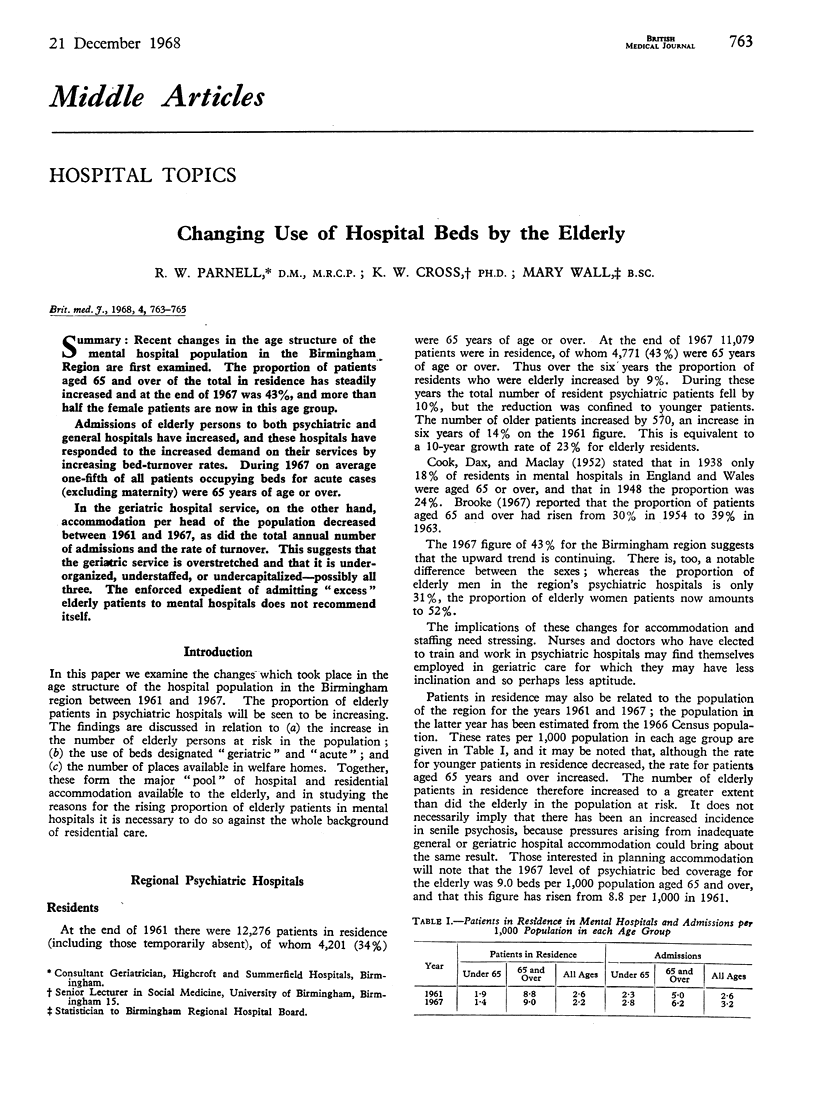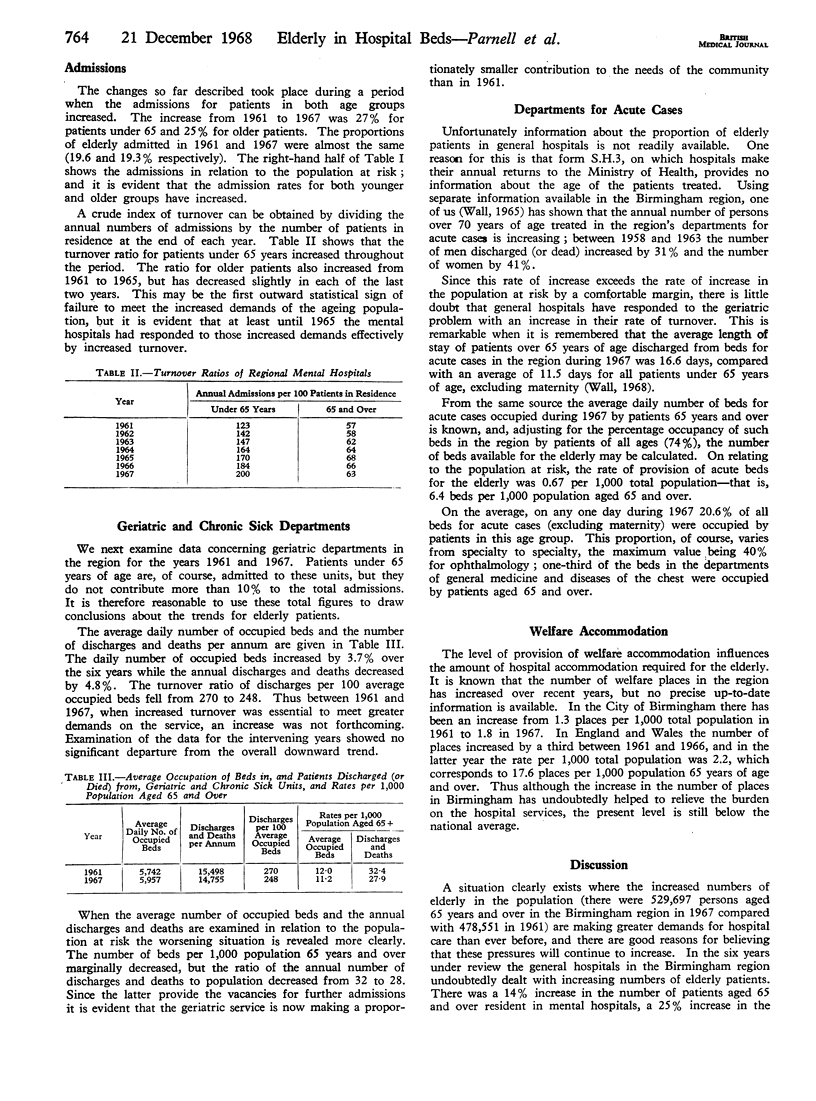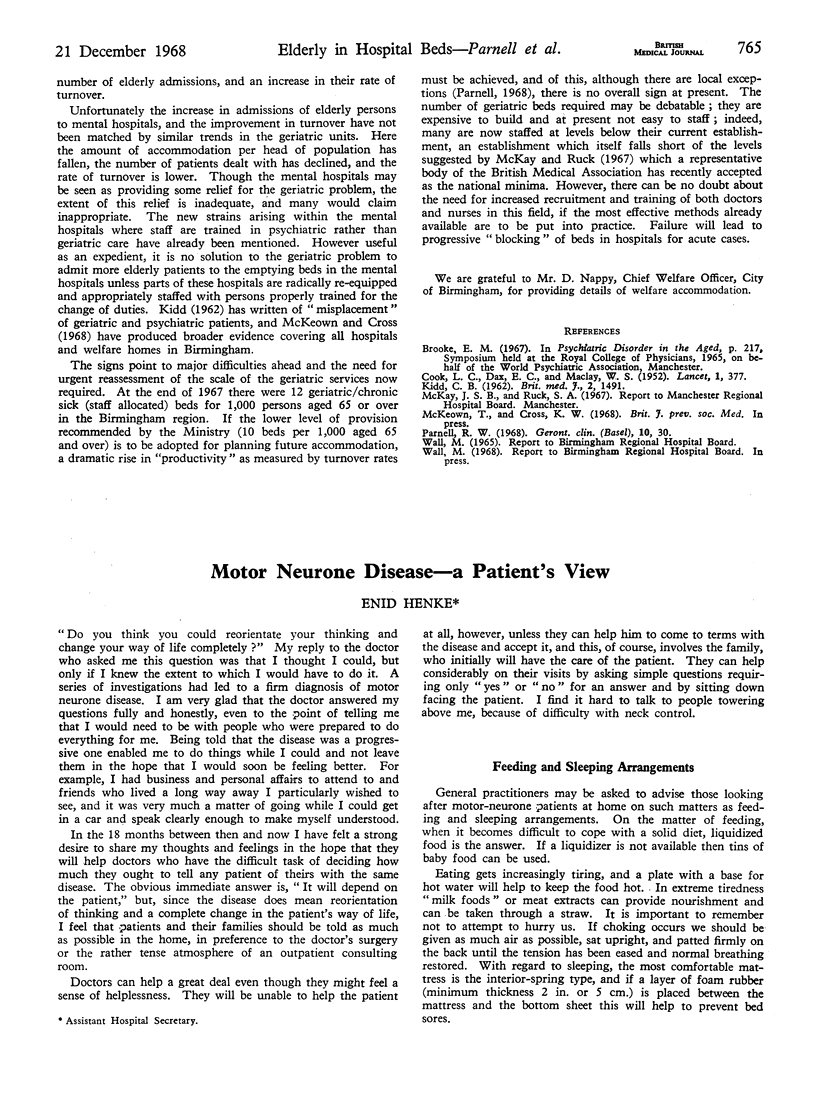Abstract
Recent changes in the age structure of the mental hospital population in the Birmingham Region are first examined. The proportion of patients aged 65 and over of the total in residence has steadily increased and at the end of 1967 was 43%, and more than half the female patients are now in this age group.
Admissions of elderly persons to both psychiatric and general hospitals have increased, and these hospitals have responded to the increased demand on their services by increasing bed-turnover rates. During 1967 on average one-fifth of all patients occupying beds for acute cases (excluding maternity) were 65 years of age or over.
In the geriatric hospital service, on the other hand, accommodation per head of the population decreased between 1961 and 1967, as did the total annual number of admissions and the rate of turnover. This suggests that the geriatric service is overstretched and that it is under-organized, understaffed, or undercapitalized—possibly all three. The enforced expedient of admitting “excess” elderly patients to mental hospitals does not recommend itself.
Full text
PDF


Selected References
These references are in PubMed. This may not be the complete list of references from this article.
- COOK L. C., CUNNINGHAM DAX E., MACLAY W. S. The geriatric problem in mental hospitals. Lancet. 1952 Feb 23;1(6704):377–382. doi: 10.1016/s0140-6736(52)90001-9. [DOI] [PubMed] [Google Scholar]
- KIDD C. B. Misplacement of the elderly in hospital. A study of patients admitted to geriatric and mental hospitals. Br Med J. 1962 Dec 8;2(5318):1491–1495. doi: 10.1136/bmj.2.5318.1491. [DOI] [PMC free article] [PubMed] [Google Scholar]
- Parnell R. W. Prospective geriatric bed requirements in a mental hospital. Gerontol Clin (Basel) 1968;10(1):30–36. doi: 10.1159/000245163. [DOI] [PubMed] [Google Scholar]


